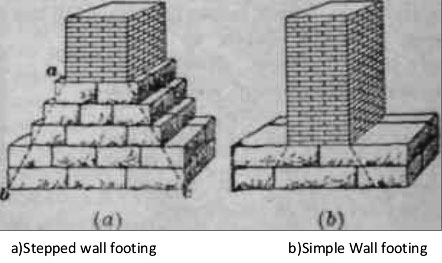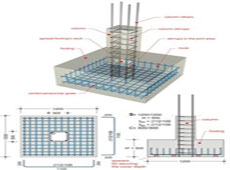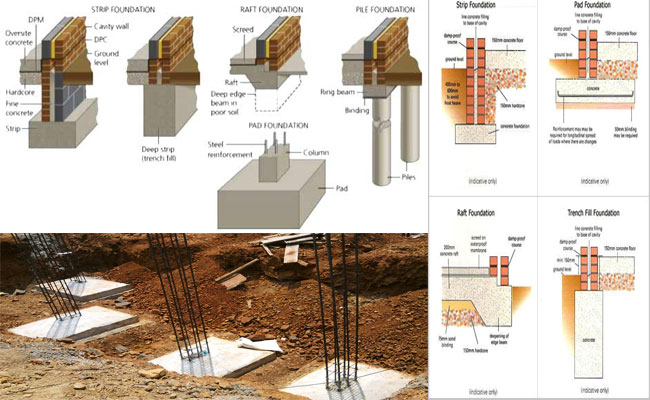Different categories of foundations

In a structure, there are usually two sections, one is situated over the ground and called as super structure and the other sub-structure of the foundation is situated underneath the ground level. The Foundation (alias footing) is the inherent part of the structure and its objective is to transfer the load from the structure to the ground soil. The foundation is laid on the solid ground and it is as the foundation bed. The foundation delivers the load of the structure and it’s self-weight to the soil remains in such a manner that the ultimate bearing capacity of the soil does not surpass (the shear failure is not permissible) and the settlement is bearable.
In all structures, the foundation is set at the base for the purposes given below:
- To disperse the load of the structure over a wide-ranging bearing area.
- To load the bearing surface at identical rate with the purpose of resisting unequal settlement.
- To stop the lateral movement of the supporting material.
- To improve the overall strength of the structure.
Contents:
Shallow Foundation
1. Wall Footing
2. Isolated column/Column Footing
3. Combined Footing
4. Cantilever (Strap) Footing
5. Mat (Raft) Foundation
Deep Foundation
1. Pile Foundation
2. Pier Foundation
3. Well (Caissons) Foundation
The selection of foundation is dependent on the following factors:-
Depending on the transmittal of load to the ground, foundations are divided into two sub-categories i.e. shallow foundation and deep foundation.
Shallow Foundation
Shallow foundation stands for those foundations in which the depth of the foundation is kept below the width of the foundation (D < B). Shallow foundations are usually called as spread footing as they transfer the load of the super structure laterally into the ground.

Sorting of Shallow Foundation:
Based on the design, the shallow foundations are categorized as:
- Wall Footing
- Isolated column or Column Footing
- Combined Footing
- Cantilever (Strap) Footing
- Mat (Raft) Foundation

Wall Footing
This type of foundation spreads endless manner along the direction of the wall and allows to transfer the load of the wall into the ground. Wall footings are mostly effective where transferrable loads are small and are inexpensive in dense sands and gravels. In this type of foundation the width remains 2-3 times the width of the wall at ground level. Different types of materials like stone, brick, plain or reinforced cement concrete are utilized to build up wall footing.

Column Footing
To construct column footing, the depth should be over 1.5m. Column footing is very cost-effective. In this type of foundation the base of the column is expanded. Column footing comes in the form of flat slab and may be built up with plain or reinforced concrete.
To get more information, click on the following link.
www.civileblog.com

